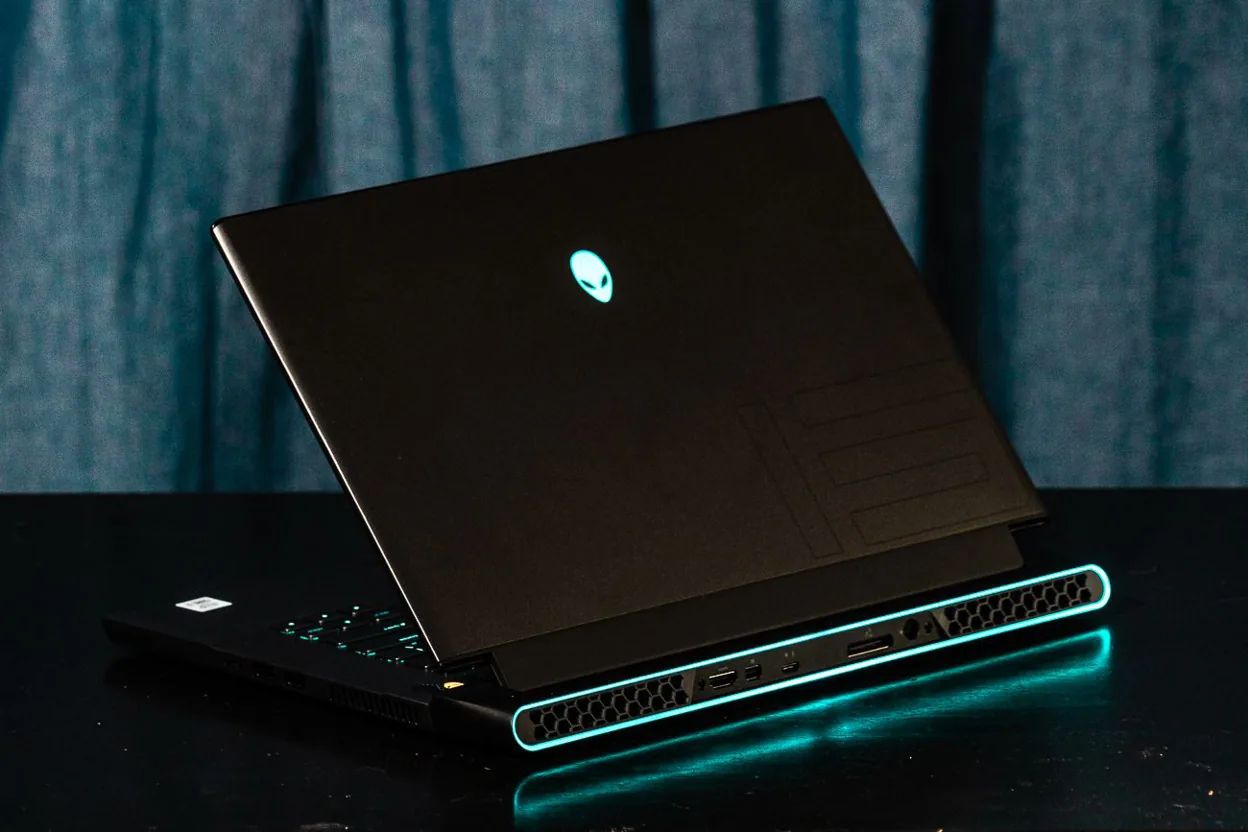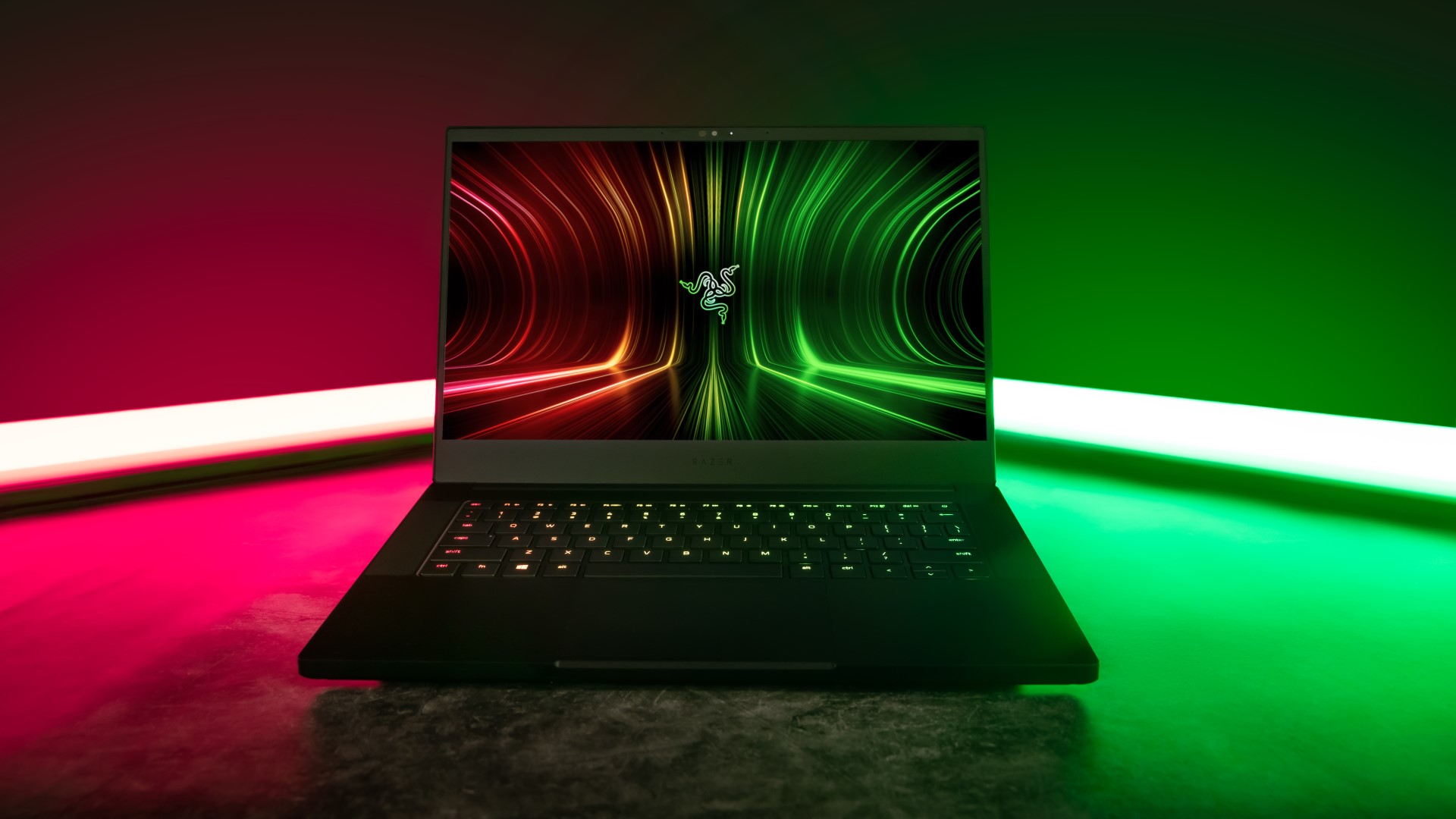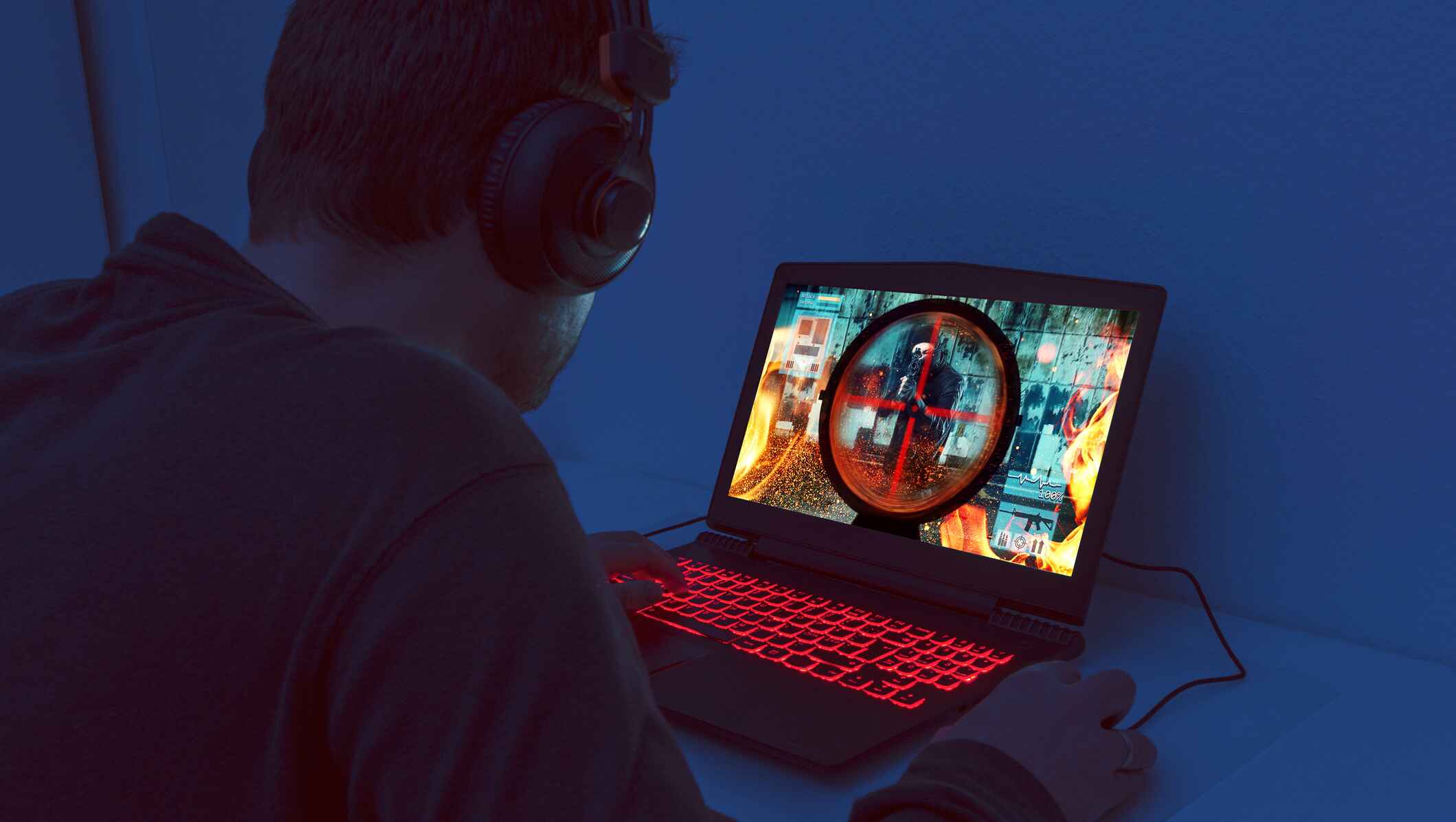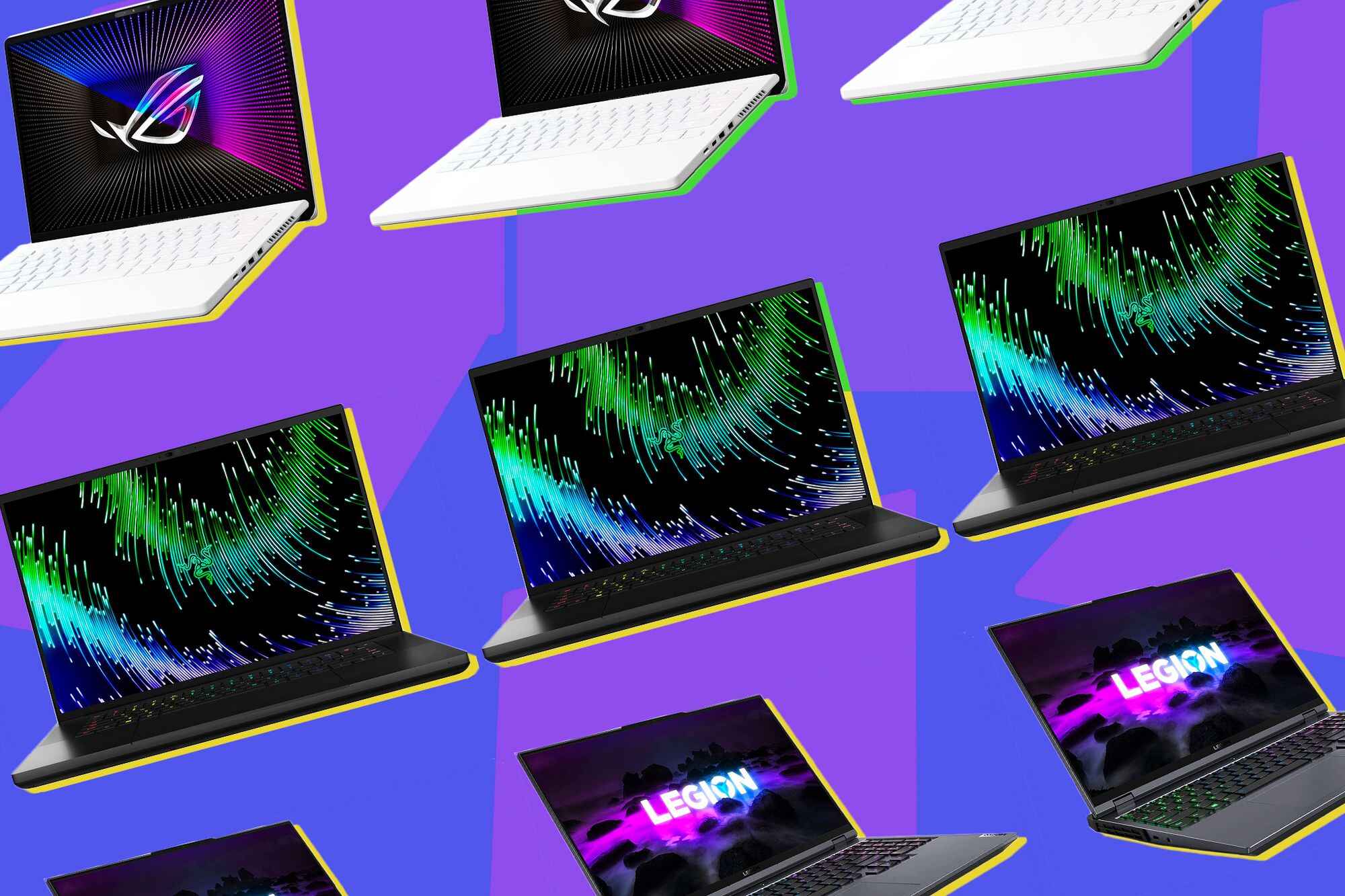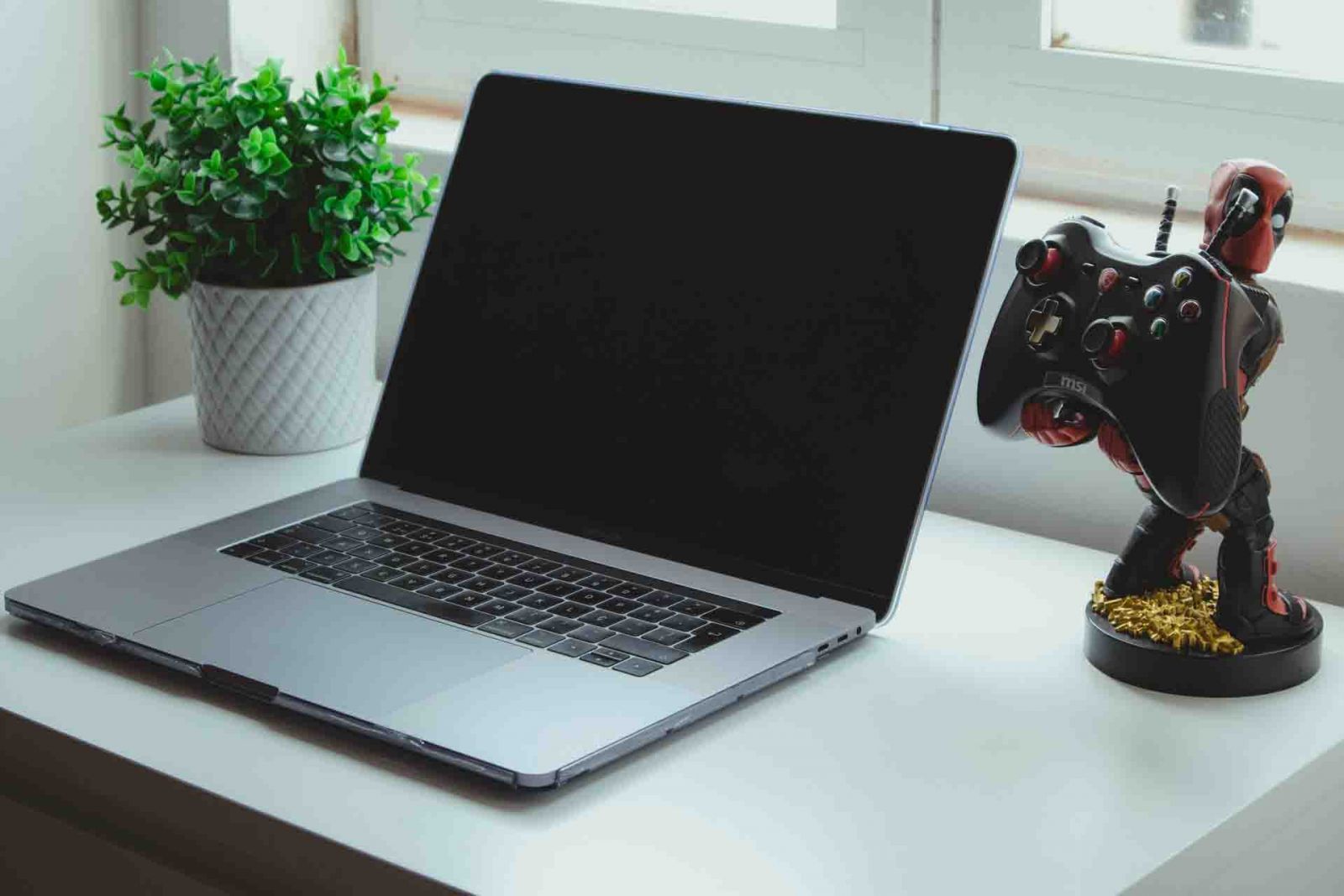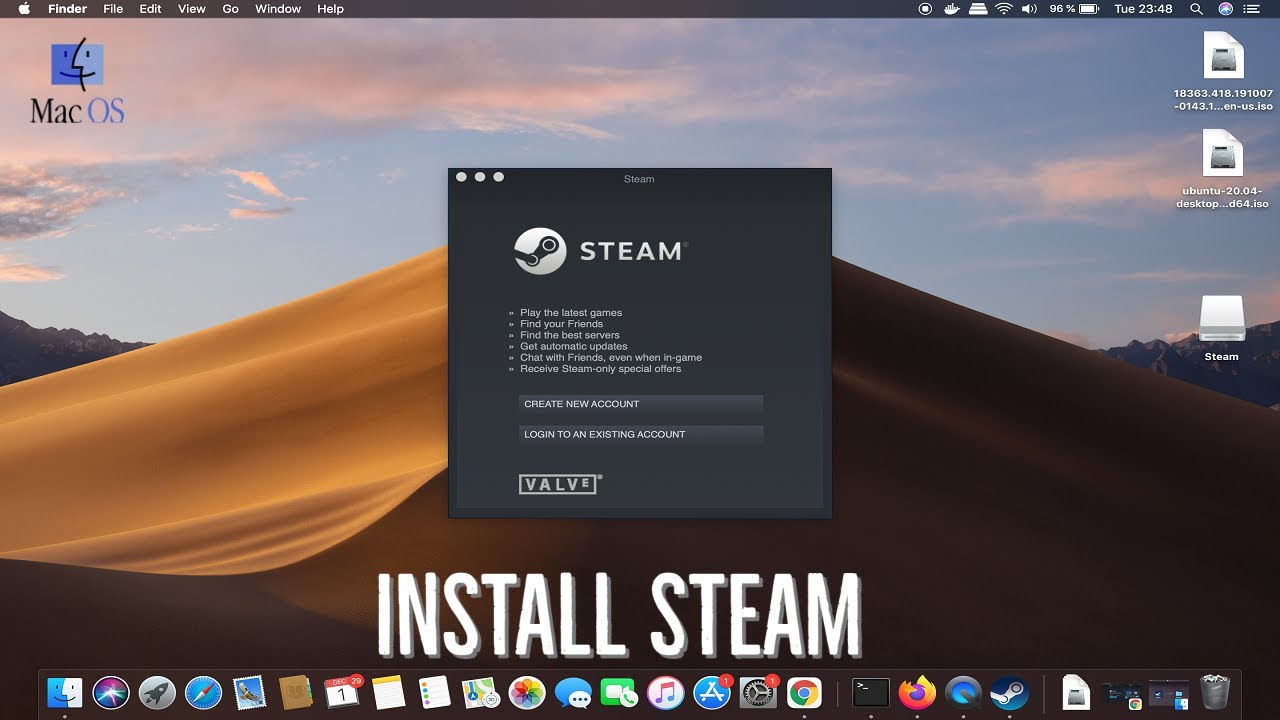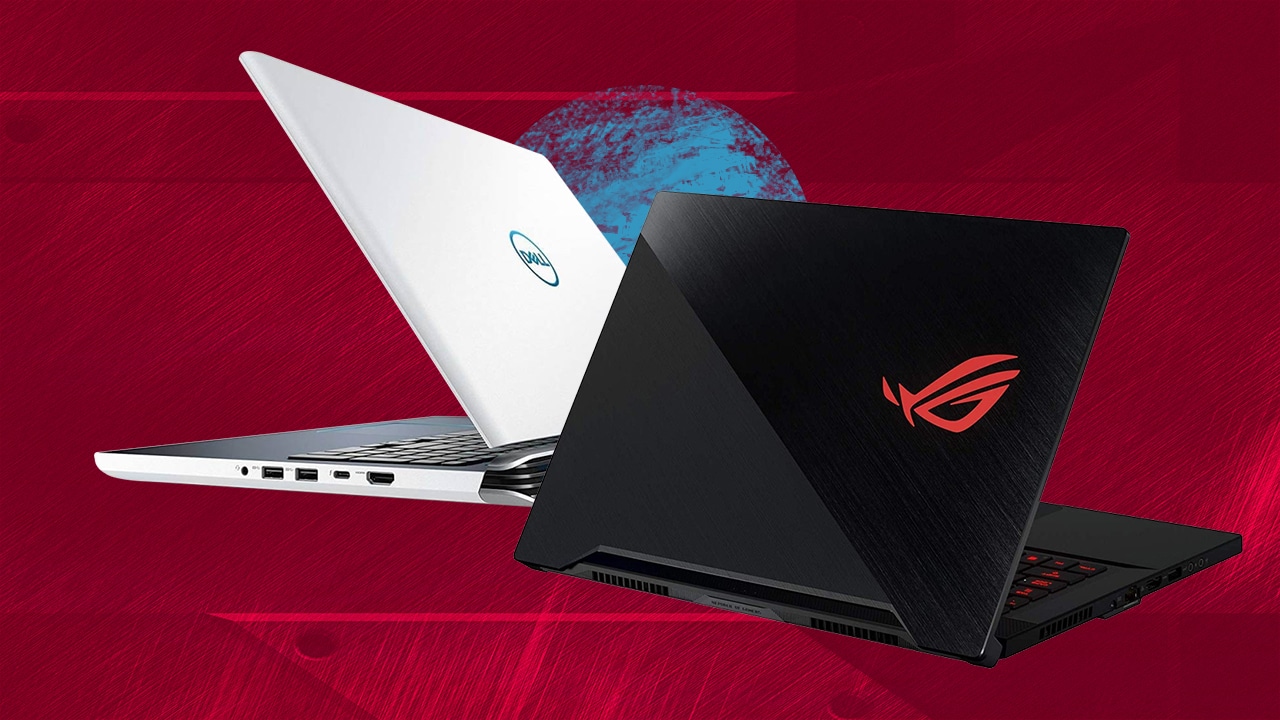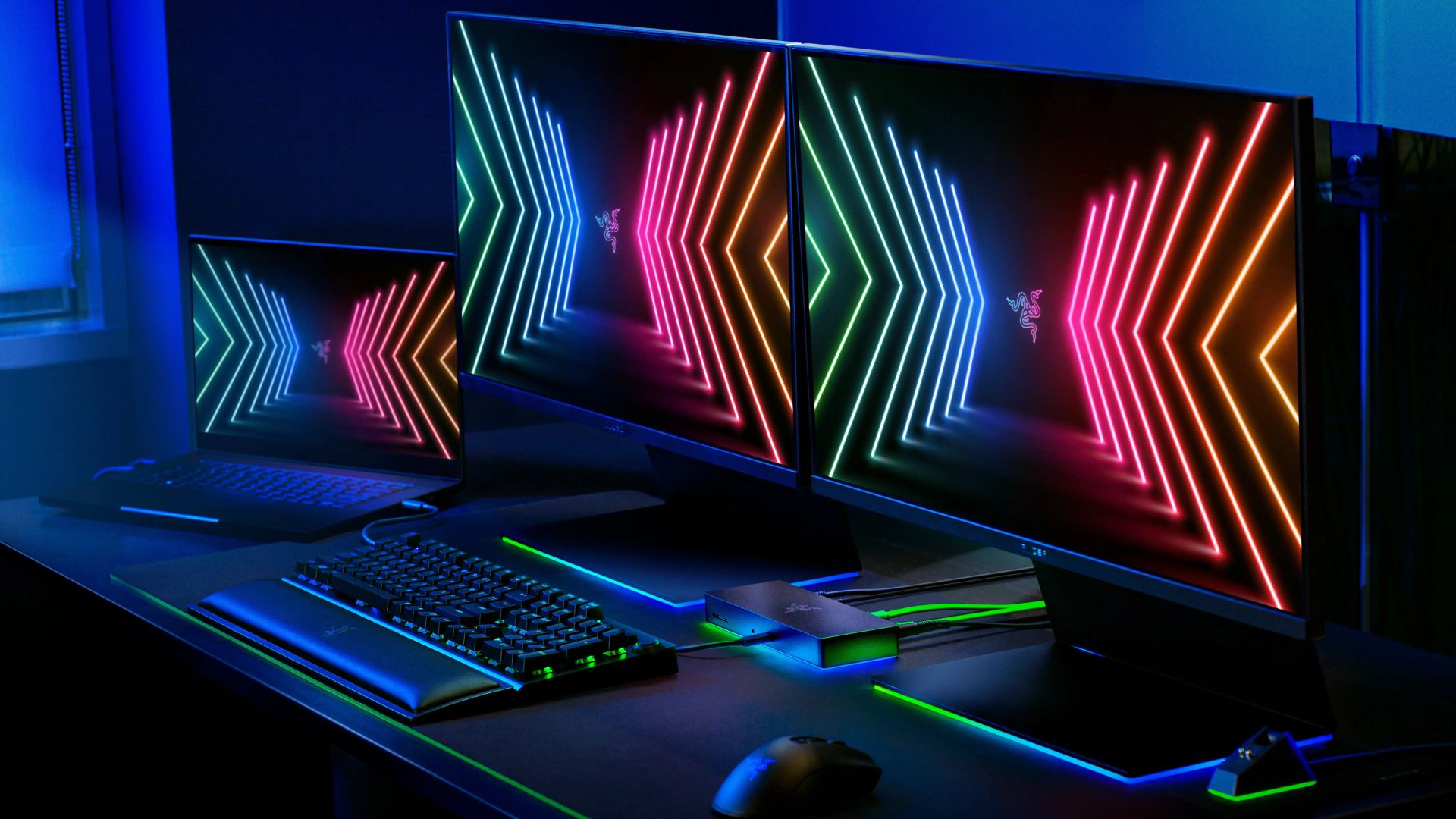Processor
When it comes to purchasing a new gaming laptop, one of the most important features to consider is the processor. The processor is the brain of the computer, responsible for executing all the tasks and calculations necessary for running games smoothly.
The processor’s performance directly affects the speed and efficiency of the laptop. For gaming, you’ll want a processor with multiple cores and a high clock speed. This ensures that it can handle the demanding requirements of modern games and provide a seamless gaming experience.
Some popular processor options for gaming laptops include Intel Core i7 and AMD Ryzen 7. These processors offer excellent performance and can handle even the most demanding games with ease. Additionally, newer generations of processors tend to offer better power efficiency and improved performance compared to older ones.
It’s also important to consider the specific model and generation of the processor. For example, the Intel Core i7-10750H 10th generation processor offers better performance compared to the Intel Core i7-9750H 9th generation processor.
Another factor to consider is whether the processor supports hyper-threading. Hyper-threading allows the processor to handle multiple simultaneous tasks, resulting in improved multitasking capabilities. This can be beneficial when running games in the background while performing other tasks.
Lastly, don’t forget to check the thermal design power (TDP) of the processor. High TDP processors tend to generate more heat, which can impact the laptop’s cooling system. Opting for a processor with a moderate TDP can help ensure better temperature management, preventing overheating during extended gaming sessions.
In summary, the processor is a vital component when selecting a gaming laptop. Look for a processor with multiple cores, a high clock speed, and support for hyper-threading. Consider the model and generation of the processor, as well as its thermal design power. By choosing a powerful and efficient processor, you’ll be well-equipped to handle the demanding performance requirements of modern games.
Graphics Card
When purchasing a new gaming laptop, one of the most crucial features to consider is the graphics card. The graphics card, also known as the GPU (Graphics Processing Unit), is responsible for rendering the visuals and ensuring smooth gameplay. It plays a significant role in determining the overall gaming performance and graphical fidelity of your laptop.
For a gaming laptop, it is essential to have a dedicated graphics card rather than relying on integrated graphics. Dedicated graphics cards have their own dedicated memory and processing power, which allows them to handle the demanding graphics requirements of modern games. Popular options in the market include NVIDIA GeForce and AMD Radeon graphics cards.
When choosing a graphics card, look for one with a sufficient amount of VRAM (Video Random Access Memory). VRAM is crucial for storing and processing the graphical data required by games. More VRAM allows for smoother gameplay, higher resolutions, and better texture quality. Aim for a minimum of 4GB of VRAM, but if you are a serious gamer or plan on playing graphically intensive games, consider getting a laptop with 8GB or more.
It’s also important to consider the specific model and generation of the graphics card. Newer models tend to offer improved performance, power efficiency, and feature support compared to older ones. For example, the NVIDIA GeForce RTX series introduces real-time ray tracing and DLSS technology, which can significantly enhance the visual quality of games.
The clock speed of the graphics card is another aspect to consider. A higher clock speed means faster processing, resulting in smoother gameplay. However, keep in mind that clock speed alone is not the sole indicator of performance, as other factors like architecture and CUDA cores also play a role.
Additionally, it’s worth considering the thermal design of the graphics card. Gaming laptops can generate a considerable amount of heat during intense gaming sessions. Look for laptops with efficient cooling systems and optimized thermal management to prevent overheating and performance throttling.
In summary, choosing a powerful graphics card with dedicated VRAM, a reputable brand, and a suitable amount of clock speed is crucial for an optimal gaming experience. Keep in mind the specific requirements of the games you plan on playing, as well as your budget, to make an informed decision. By prioritizing a high-quality graphics card, you can ensure smooth gameplay and stunning visuals on your gaming laptop.
RAM
When it comes to gaming, having an adequate amount of RAM (Random Access Memory) is essential for a smooth and responsive gaming experience. RAM plays a crucial role in storing and quickly accessing data that the CPU (Central Processing Unit) needs to run games and other applications efficiently.
In general, the more RAM you have, the better. However, it is important to consider your gaming needs and budget when deciding on the amount of RAM for your gaming laptop. Nowadays, gaming laptops typically come with a minimum of 8GB of RAM, which is sufficient for most gaming requirements. If you’re a serious gamer or plan to run resource-intensive tasks alongside gaming, consider opting for 16GB or even 32GB of RAM for better multitasking capabilities and smoother gameplay.
Another factor to consider is the RAM speed or frequency. The higher the speed, the faster data can be accessed, resulting in improved overall performance. Look for DDR4 RAM with higher clock speeds, such as 2666MHz or 3200MHz, as they provide better gaming performance compared to lower-speed alternatives.
It’s worth noting that while RAM is important, it’s not the sole factor determining gaming performance. The combination of a powerful processor, graphics card, and sufficient RAM is crucial for optimal gaming performance.
Additionally, some gaming laptops offer upgradeable RAM slots, allowing you to easily increase the amount of RAM in the future if needed. This can be a cost-effective option, as you can start with a lower amount of RAM and upgrade it later as your needs change.
Lastly, ensure that your gaming laptop has a dual-channel memory configuration, which means it has two memory modules running simultaneously. This setup provides faster data access and can significantly improve gaming performance compared to a single-channel configuration.
In summary, having an adequate amount of RAM is crucial for a smooth and responsive gaming experience. Aim for a minimum of 8GB, but consider higher amounts if you’re a serious gamer or plan on running resource-intensive tasks alongside gaming. Look for RAM with higher clock speeds for better performance, and consider opting for a dual-channel memory configuration. By considering these factors, you can ensure your gaming laptop is equipped with sufficient RAM for an optimal gaming experience.
Storage
When purchasing a new gaming laptop, storage is an important consideration. Having the right type and amount of storage plays a crucial role in the overall gaming experience and the performance of your laptop.
There are primarily two types of storage options available for gaming laptops: solid-state drives (SSD) and hard disk drives (HDD). SSDs are faster, more reliable, and provide quicker access to data compared to HDDs. They significantly reduce game load times, enable faster file transfers, and improve overall system responsiveness. On the other hand, HDDs offer larger storage capacities at a lower cost, making them suitable for storing large game libraries, multimedia files, and other data.
Ideally, it’s best to have a combination of both SSD and HDD storage. Having a smaller SSD (256GB or 512GB) as your primary drive for the operating system and frequently played games will give you the benefit of faster load times and better responsiveness. Meanwhile, a larger HDD (1TB or more) can be used for storing less frequently accessed games, multimedia files, and other data.
For gamers who value speed and performance, there is the option of NVMe SSDs. These SSDs provide even faster data transfer speeds and are ideal for those who want the utmost performance. However, they tend to come at a higher price point compared to traditional SSDs.
It’s also worth considering the RPM (rotations per minute) of an HDD. Higher RPM indicates faster data access. While 7200 RPM HDDs are faster than their 5400 RPM counterparts, SSDs remain the fastest and most preferred option for gaming laptops.
Additionally, some gaming laptops offer the flexibility to upgrade or add storage later on. This allows you to start with a smaller storage capacity and expand it as your needs grow.
In summary, having the right type and amount of storage is crucial for gaming laptops. Aim for a combination of SSD and HDD storage, with the SSD serving as the primary drive for faster load times and responsiveness. Consider an NVMe SSD for even faster performance, if your budget allows. Also, keep in mind the RPM of an HDD if you opt for one. By considering these factors, you can ensure your gaming laptop has ample storage to accommodate your game library, multimedia files, and other data.
Display
The display is a crucial aspect of a gaming laptop, as it directly impacts your visual experience while playing games. When choosing a gaming laptop, it’s important to consider the display size, resolution, refresh rate, and panel technology to ensure an immersive and smooth gaming experience.
The display size is a matter of personal preference. Smaller displays (around 15 inches) are more portable and lightweight, making them ideal for those who frequently travel or prioritize portability. On the other hand, larger displays (17 inches or more) offer a more immersive gaming experience and larger viewing area.
Resolution determines the level of detail and sharpness in graphics. The most common resolutions for gaming laptops are 1080p (Full HD) and 1440p (QHD). Higher resolutions like 4K provide incredibly sharp visuals, but they also require more powerful hardware to drive games at native resolution without sacrificing performance.
Refresh rate refers to the number of times the display refreshes the image per second. A higher refresh rate, such as 144Hz or 240Hz, ensures smoother motion and reduces motion blur. It is particularly beneficial for fast-paced games or competitive gaming, as it allows for more responsive and fluid gameplay.
Panel technology is another important consideration. IPS (In-Plane Switching) panels offer wide viewing angles and accurate color reproduction, providing a more immersive visual experience. TN (Twisted Nematic) panels, on the other hand, have faster response times but narrower viewing angles and less accurate color reproduction. VA (Vertical Alignment) panels strike a balance between the two, offering good viewing angles and response times.
It’s worth noting that some gaming laptops may also offer features like G-Sync or FreeSync. These technologies synchronize the display’s refresh rate with the graphics card’s output, reducing screen tearing and providing a smoother gaming experience.
Lastly, consider the brightness levels and color accuracy of the display. A bright and vibrant display ensures a more enjoyable gaming experience, especially for games that emphasize visual aesthetics.
In summary, when choosing a gaming laptop, pay attention to the display size, resolution, refresh rate, panel technology, and additional features like G-Sync or FreeSync. Consider your gaming preferences, portability needs, and budget to determine the ideal display specifications for your gaming laptop. By selecting a high-quality display, you can fully immerse yourself in the gaming world with stunning visuals and smooth gameplay.
Battery Life
Battery life is an important consideration when purchasing a gaming laptop, especially for gamers who often play on the go or in situations where access to a power outlet is limited. While gaming laptops are typically power-hungry devices, there are certain factors to consider that can help maximize your laptop’s battery life.
Firstly, it is essential to understand that gaming laptops are designed primarily for high-performance tasks and typically have shorter battery lives compared to traditional laptops. However, advancements in technology have allowed some gaming laptops to offer improved battery efficiency and longer battery life.
The battery life of a gaming laptop is influenced by various factors, including the overall power consumption of the hardware components, such as the processor and graphics card, as well as the size and capacity of the battery itself. Higher-end gaming laptops tend to have more power-hungry components, which can result in shorter battery life compared to mid-range or entry-level options.
Opting for a gaming laptop with NVIDIA Optimus or AMD Switchable Graphics technology can help conserve battery life. These technologies allow the laptop to switch between integrated and dedicated graphics depending on the task at hand. When performing non-gaming tasks or using less demanding applications, the laptop can utilize the integrated graphics, which consume less power and extend battery life.
Reducing the screen brightness, closing unnecessary background applications, and disabling features like backlit keyboards or RGB lighting can also contribute to extending battery life. Additionally, adjusting the power settings and enabling battery-saving modes can help optimize power consumption.
It’s also important to consider the battery capacity and whether the laptop allows for easy battery replacement or upgrading. Some gaming laptops offer larger battery options or the ability to swap the battery, which can be beneficial for those who require longer battery life and want the flexibility to change batteries when needed.
Lastly, it’s worth keeping in mind that gaming laptops are generally best suited for being plugged in during gaming sessions, as this provides consistent power and prevents performance limitations due to power throttling.
In summary, gaming laptops typically have shorter battery lives compared to traditional laptops due to their high-performance hardware. However, choosing a laptop with battery-saving technologies, adjusting power settings, and minimizing unnecessary power consumption can help maximize battery life. Consider the capacity and upgradability of the battery to ensure it meets your needs. Overall, while gaming laptops may not offer extensive battery life, optimizing settings and planning for accessible power sources can ensure a satisfactory gaming experience on the go.
Cooling System
The cooling system is a vital component of a gaming laptop as it prevents overheating and ensures optimal performance during intense gaming sessions. Gaming laptops tend to generate a significant amount of heat due to their powerful hardware, making an effective cooling system essential for the longevity and reliability of the device.
The cooling system in a gaming laptop typically consists of two main components: heat sinks and fans. Heat sinks are designed to absorb and dissipate the heat generated by the CPU, GPU, and other components. Fans work in conjunction with heat sinks by expelling hot air and bringing in cooler air to maintain a stable temperature within the laptop.
When choosing a gaming laptop, it’s important to consider the cooling capabilities of the laptop’s design and the efficiency of the cooling system. Look for laptops that have multiple heat pipes and ample heat dissipation area for efficient heat transfer. Larger fans and additional exhaust vents can also improve heat dissipation and airflow.
Some gaming laptops employ advanced cooling technologies like vapor chambers or liquid metal cooling. Vapor chambers spread heat across a larger surface area, facilitating more efficient heat dissipation. Liquid metal cooling, on the other hand, uses a liquid metal alloy to transfer heat away from the CPU and GPU, resulting in better cooling capability.
Proper maintenance and cleaning are crucial to ensure the longevity and effectiveness of the cooling system. Dust accumulation can hinder airflow and reduce cooling efficiency. Regularly cleaning the vents and fans can prevent overheating and potential performance issues.
It’s worth noting that intense gaming sessions can still put a significant load on the cooling system, and some gaming laptops may experience thermal throttling—a mechanism that reduces the performance of the components to prevent overheating. However, a well-designed cooling system can minimize thermal throttling and help maintain consistent performance even during extended gaming sessions.
Finally, using a laptop cooling pad or an external cooling solution can further enhance the cooling capabilities of your gaming laptop. These accessories provide additional airflow and help dissipate heat, reducing the strain on the internal cooling system and improving overall performance.
In summary, a reliable and efficient cooling system is crucial for a gaming laptop to prevent overheating and ensure optimal performance. Consider laptops with multiple heat pipes, larger fans, and advanced cooling technologies for improved heat dissipation. Regular maintenance and cleaning can also prolong the life and effectiveness of the cooling system. By prioritizing a robust cooling system, you can enjoy uninterrupted gaming sessions without worrying about overheating or performance throttling.
Keyboard and Touchpad
The keyboard and touchpad are essential components of a gaming laptop, as they directly impact the overall gaming experience and user comfort. When choosing a gaming laptop, it’s important to consider the quality, layout, and features of the keyboard and touchpad to ensure smooth gameplay and comfortable usage.
Firstly, the keyboard is an integral part of a gaming laptop, and a good quality keyboard can significantly enhance your gaming performance. Look for a keyboard with a responsive and tactile feel, preferably with individual backlit keys for better visibility in low-light environments. Mechanical keyboards are highly regarded among gamers for their precise key registration and satisfying typing experience, but they may add extra weight and cost to the laptop.
Consider the layout and ergonomics of the keyboard, ensuring it suits your preferences and hand size. Some gaming laptops offer customizable RGB lighting options that allow you to personalize the keyboard backlighting to your liking. Additionally, look for a keyboard with anti-ghosting and N-key rollover features, which enable simultaneous key presses without any input conflicts.
The touchpad, although not as crucial as the keyboard for gaming purposes, should still be functional and accurate. It’s important to have a touchpad that smoothly tracks finger movements and supports multi-touch gestures, allowing for intuitive navigation within the operating system and applications.
Many gaming laptops also come with additional features to enhance the gaming experience. These may include programmable macro keys, dedicated gaming mode buttons, or even an integrated numeric keypad. It’s worth considering these features if they align with your gaming preferences and requirements.
It’s worth noting that some gamers prefer using a separate gaming mouse instead of the touchpad for better precision and control. If you’re serious about gaming, investing in a high-quality gaming mouse can complement your gaming experience and alleviate any potential limitations of the touchpad.
In summary, a comfortable and responsive keyboard is essential for an enjoyable gaming experience. Look for a keyboard with a tactile feel, individual backlit keys, and customizable features. Consider the layout and ergonomics that suit your preferences, as well as any additional features that enhance your gaming performance. While the touchpad may not be the primary input device for gaming, ensure it is accurate and supports multi-touch gestures for smooth navigation. By prioritizing a high-quality keyboard and touchpad, you can enhance your gaming experience and overall usability of the gaming laptop.
Connectivity Options
When it comes to gaming laptops, having a variety of connectivity options is crucial for a seamless gaming experience and enhanced versatility. The availability of different ports and wireless connectivity options ensures that you can connect various peripherals, transfer data, and enjoy online gaming without limitations.
One of the essential connectivity options for gaming laptops is USB. Look for laptops with multiple USB ports, preferably including USB 3.0 or higher for faster data transfer speeds. These ports allow you to connect peripherals like gaming mice, keyboards, external storage devices, and other accessories.
Another important port to consider is an HDMI port. HDMI allows you to connect your gaming laptop to an external display or a larger screen, providing a more immersive gaming experience. It’s especially useful if you want to enjoy gaming on a bigger monitor or television.
An Ethernet port is crucial for gamers who prioritize a stable and reliable internet connection. While most gaming laptops come with built-in Wi-Fi, having the option to connect via Ethernet ensures a more stable and lower-latency connection for online gaming.
For wireless connectivity, ensure that your gaming laptop supports the latest Wi-Fi standard, such as Wi-Fi 6 (802.11ax). Wi-Fi 6 provides faster speeds and better performance, especially in environments with multiple devices connected simultaneously. Bluetooth connectivity is also convenient for connecting peripherals like wireless gaming controllers or headphones.
Some gaming laptops may have additional connectivity options, such as DisplayPort, USB Type-C, or a memory card reader. DisplayPort can be beneficial if you want to connect your laptop to high-resolution external monitors or VR headsets. USB Type-C ports offer versatility, supporting various functions like charging, data transfer, and video output. A memory card reader allows for convenient transfer of photos and videos from cameras or other devices.
Lastly, consider the positioning and number of ports. Having ports on both sides of the laptop allows for more flexibility in cable management and connectivity, especially if you plan on using multiple peripherals simultaneously.
In summary, a wide range of connectivity options is essential for a gaming laptop. Look for laptops with multiple USB ports, HDMI, Ethernet, and support for the latest Wi-Fi standard. Consider additional options like DisplayPort, USB Type-C, and memory card readers based on your specific needs. By ensuring a comprehensive suite of connectivity options, you can connect various peripherals, enjoy stable internet connection, and enhance your gaming experience.
Price
Price is a significant consideration when purchasing a gaming laptop, as it determines the overall value and affordability of the device. Gaming laptops can range in price from budget-friendly options to high-end, premium models with top-of-the-line specifications. It’s important to establish a budget and consider your gaming needs to find a balance between performance and cost.
Budget-friendly gaming laptops are available for those with limited funds. These laptops typically have lower-end specifications but can still handle popular games at lower settings. They often offer a good entry point for casual gamers or those who don’t require the highest graphical settings or demanding performance.
Mid-range gaming laptops provide a better balance of performance and price. They typically offer more powerful processors, graphics cards, and larger amounts of RAM compared to budget options. These laptops can handle a wide range of games with higher graphical settings and deliver a smoother gaming experience.
High-end gaming laptops cater to gamers who demand the best performance and are willing to spend more on their gaming experience. These laptops feature top-tier components, such as the latest processors, high-end graphics cards, ample RAM, and fast storage options. They can provide excellent gaming performance, allowing for smooth gameplay at higher resolutions and maximum graphical settings.
When considering the price of a gaming laptop, it’s important to factor in the specific needs of your gaming requirements. If you’re a casual gamer or mainly play less demanding games, a budget or mid-range laptop may suffice. However, if you’re a competitive gamer or plan on playing graphically intensive games at high settings, investing in a higher-end laptop might be more suitable.
Additionally, it’s important to consider long-term value and future-proofing. Investing in a slightly higher-priced gaming laptop with better specifications can ensure that the laptop will remain capable of running newer games and handling more demanding tasks down the line.
It’s worth mentioning that prices of gaming laptops can also vary depending on factors such as brand reputation, build quality, design, and additional features. Consider these factors alongside the specifications when evaluating the price and overall value of a gaming laptop.
In summary, price is an important consideration when purchasing a gaming laptop. Set a budget and evaluate your gaming needs to find a laptop that offers the best balance between performance and cost. Consider the specific gaming requirements and future-proofing to determine if a budget, mid-range, or high-end laptop is most suitable. By finding the right price point, you can invest in a gaming laptop that provides an enjoyable gaming experience without breaking the bank.









